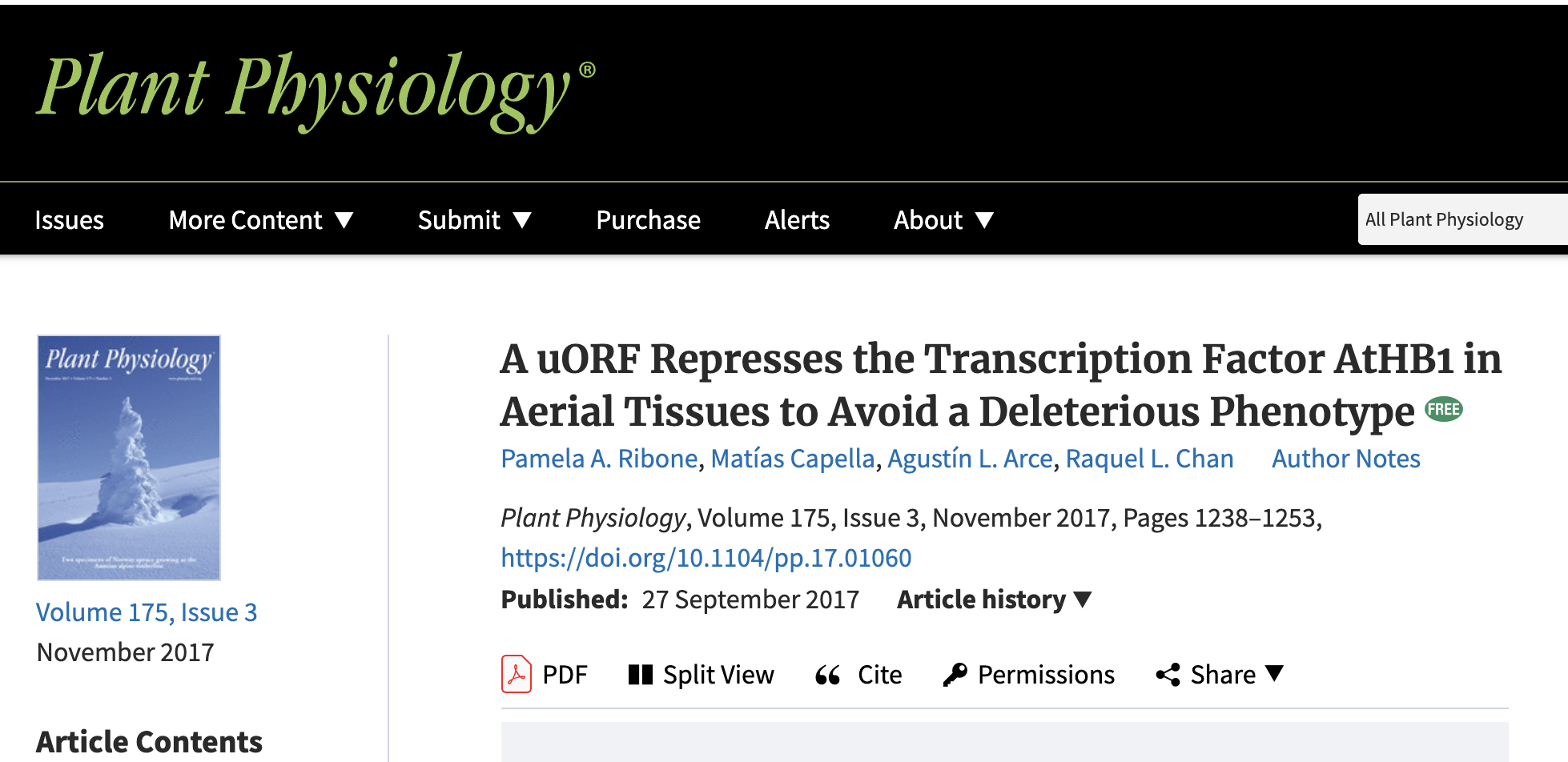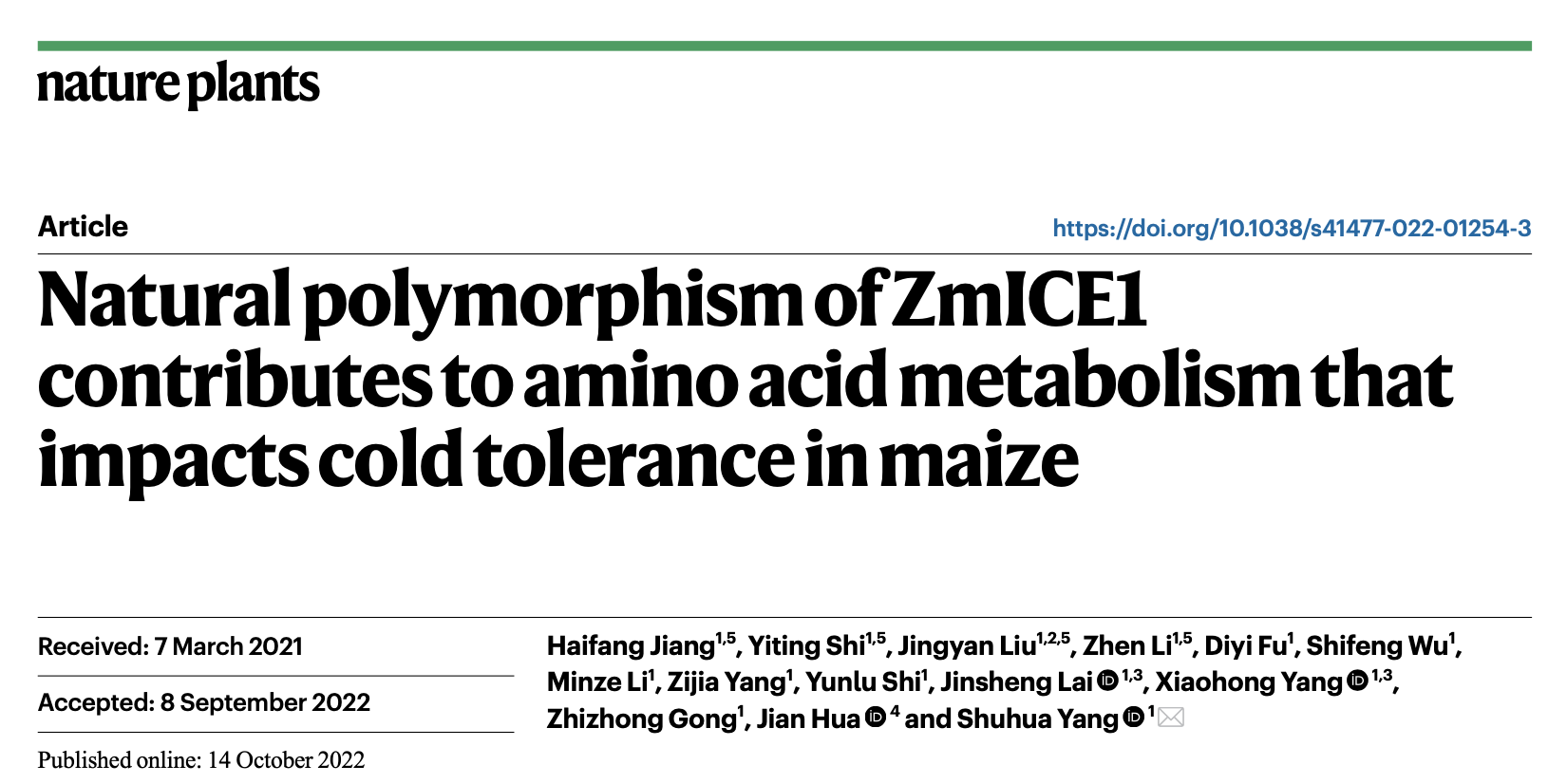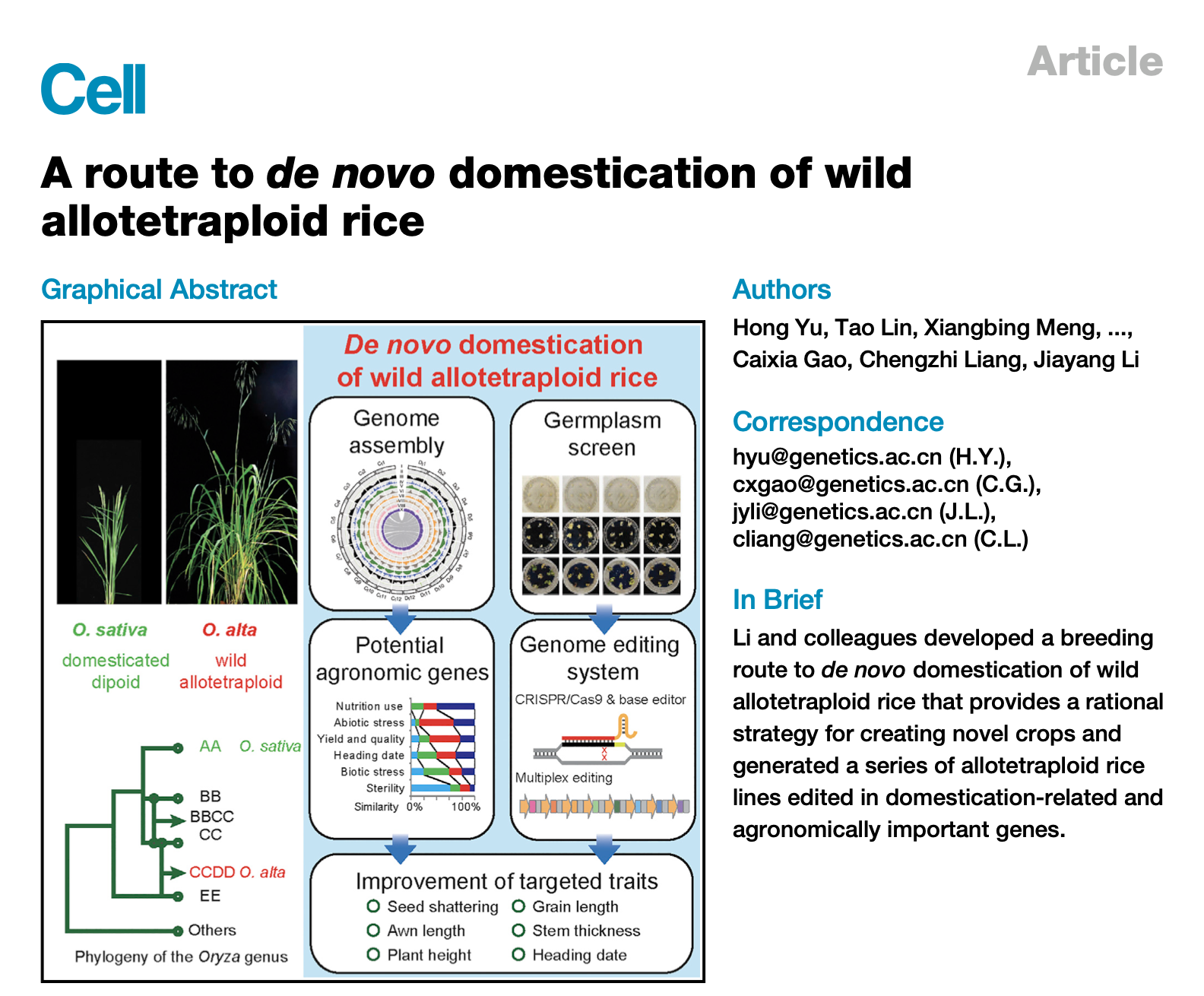category 'Lab Meeting'

Genome-wide cis-decoding for expression design in tomato using cistrome data and explainable deep learning
Abstract: In the evolutionary history of plants, variation in cis-regulatory elements (CREs) resulting in diversification of gene expression has played a central role in driving the evolution of lineage-specific traits....

OsAAP6 functions as an important regulator of grain protein content and nutritional quality in rice
Abstract: Grains from cereals contribute an important source of protein to human food, and grain protein content (GPC) is an important determinant of nutritional quality in cereals. Here we show...

H1 linker histones silence repetitive elements by promoting both histone H3K9 methylation and chromatin compaction
Abstract: Nearly 50% of mouse and human genomes are composed of repetitive sequences. Transcription of these sequences is tightly controlled during development to prevent genomic instability, inappropriate gene activation and...

Splicing-mediated activation of SHAGGY-like kinases underpinning carbon partitioning in Arabidopsis seeds
Abstract: Glycogen synthase kinase 3 (GSK3) family members serve as signaling hubs for plant development and stress responses, yet the underlying mechanism of their transcriptional regulation remains a long-standing mystery....
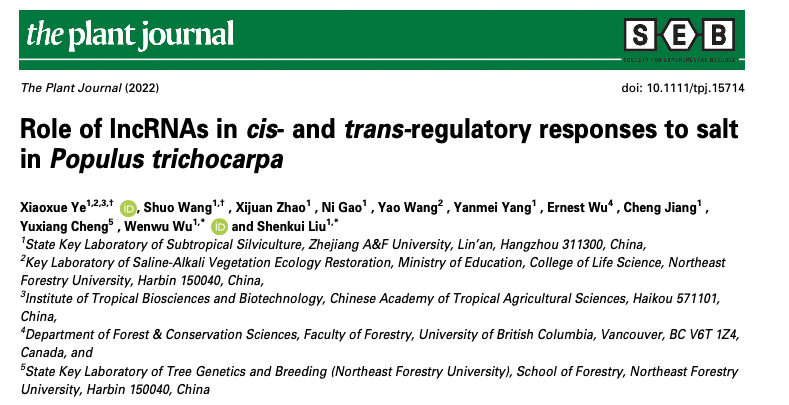
Role of lncRNAs in cis- and trans-regulatory responses to salt in Populus trichocarpa
Abstract: Long non-coding RNAs (lncRNAs) are emerging as versatile regulators in diverse biological processes. How- ever, little is known about their cis- and trans-regulatory contributions in gene expression under salt...
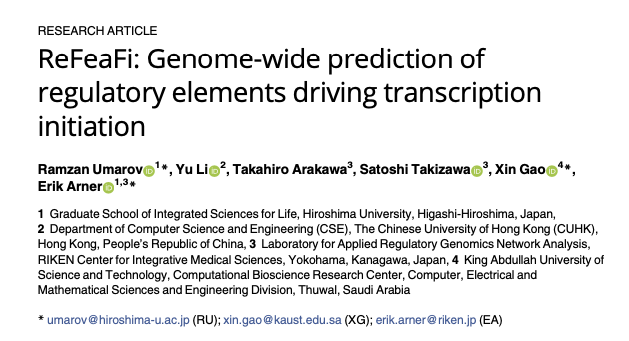
ReFeaFi: Genome-wide prediction of regulatory elements driving transcription initiation
Abstract: Regulatory elements control gene expression through transcription initiation (promoters) and by enhancing transcription at distant regions (enhancers). Accurate identification of reg- ulatory elements is fundamental for annotating genomes and...
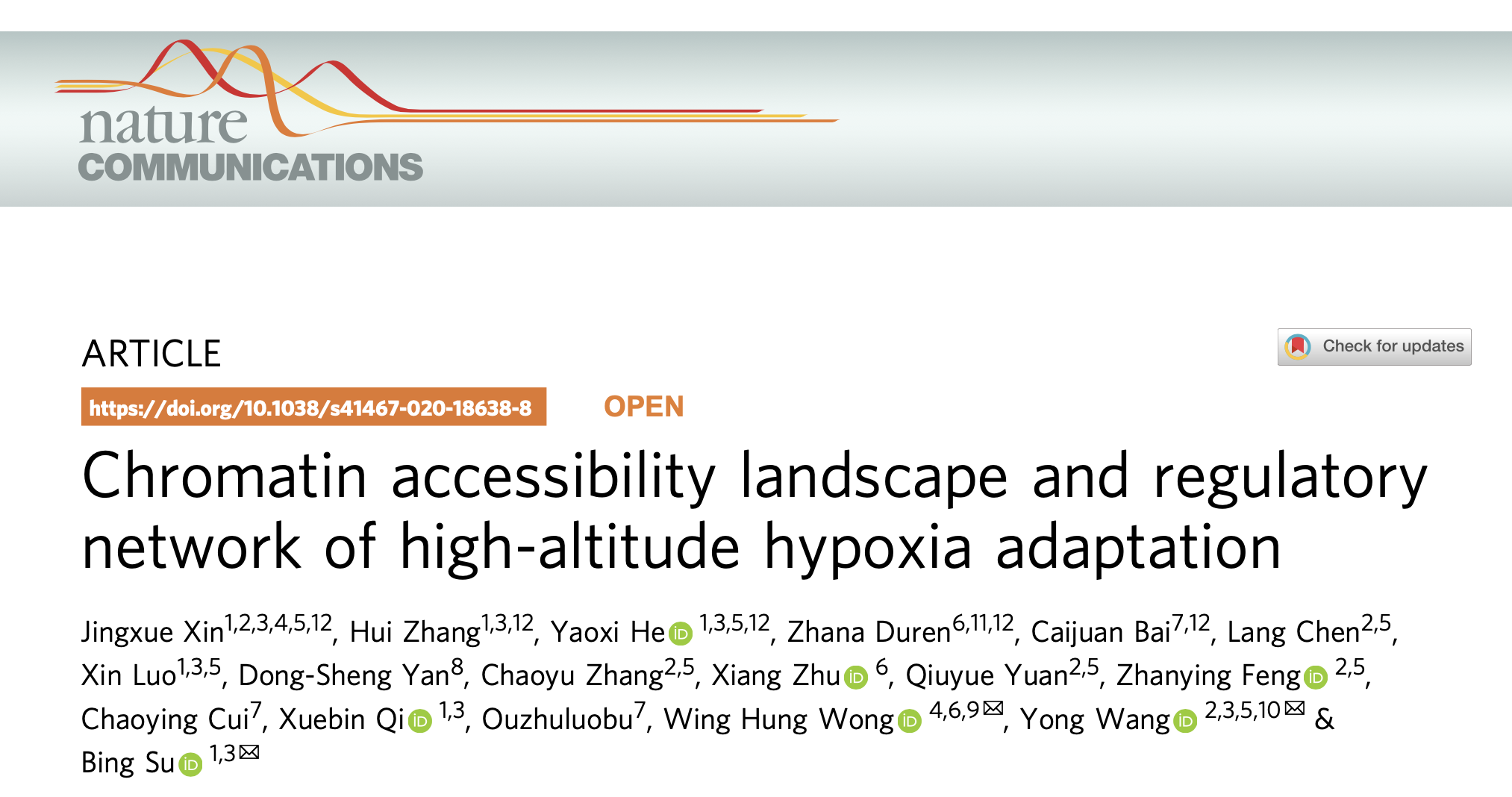
Chromatin accessibility landscape and regulatory network of high-altitude hypoxia adaptation
Abstract: High-altitude adaptation of Tibetans represents a remarkable case of natural selection during recent human evolution. Previous genome-wide scans found many non-coding variants under selection, suggesting a pressing need to...

DNA methylation-free Arabidopsis reveals crucial roles of DNA methylation in regulating gene expression and development
Abstract: A contribution of DNA methylation to defense against invading nucleic acids and maintenance of genome integrity is uncontested; however, our understanding of the extent of involvement of this epigenetic...

ReFeaFi: Genome-wide prediction of regulatory elements driving transcription initiation
Abstract: Regulatory elements control gene expression through transcription initiation (promoters) and by enhancing transcription at distant regions (enhancers). Accurate identification of regulatory elements is fundamental for annotating genomes and understanding...

A comprehensive catalog of predicted functional upstream open reading frames in humans
Abstract: Upstream open reading frames (uORFs) latent in mRNA transcripts are thought to modify translation of coding sequences by altering ribosome activity. Not all uORFs are thought to be active...

ALK, the Key Gene for Gelatinization Temperature, is a Modifier Gene for Gel Consistency in Rice
Abstract: Gelatinization temperature (GT) is an important parameter in evaluating the cooking and eating quality of rice. Indeed, the phenotype, biochemistry and inheritance of GT have been widely studied in...

Linker histones are fine-scale chromatin architects modulating developmental decisions in Arabidopsis
Abstract: Background: Chromatin provides a tunable platform for gene expression control. Besides the well-studied core nucleosome, H1 linker histones are abundant chromatin components with intrinsic potential to influence chromatin function....

The two clock proteins CCA1 and LHY activate VIN3 transcription during vernalization through the vernalization-responsive cis-element
Abstract: Vernalization, a long-term cold-mediated acquisition of flowering competence, is critically regulated by VERNALIZATION INSENSITIVE 3 (VIN3), a gene induced by vernalization in Arabidopsis. Although the function of VIN3 has...

A quantitative genomics map of rice provides genetic insights and guides breeding
Abstract: Extensive allelic variation in agronomically important genes serves as the basis of rice breeding. Here, we present a comprehen- sive map of rice quantitative trait nucleotides (QTNs) and inferred...
